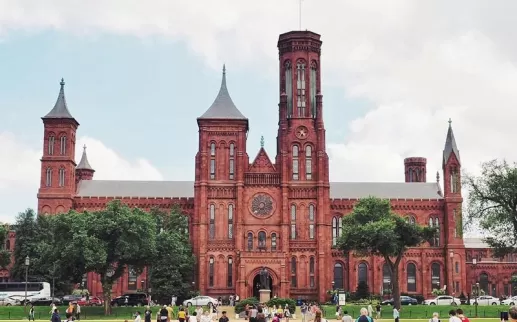In a historic display of dissent, citizens rallied under the banner "No Kings," calling for accountability and challenging President Trump’s policies while highlighting a stark divide in public opinion regarding his administration.
Protests erupted across the United States in response to President Donald Trump’s rare military parade commemorating the 250th anniversary of the U.S. Army, which unfolded amid celebrations of his birthday. Activists from the "No Kings" movement organized demonstrations across several major cities—including New York, Los Angeles, and Philadelphia—to voice opposition not just to the parade, but also to Trump’s contentious immigration policies and perceived overreach of presidential power.
Participants shouted slogans, waved flags, and carried placards critical of the president during the rallies, reflecting widespread dissatisfaction with his administration. Trump, while presiding over the pomp and pageantry of the military display, warned that any protest activity would be met with force, heightening tensions on a day meant to celebrate patriotism.
One of the protestors, Karen Van Trieste, a nurse from Philadelphia, expressed her concerns about Trump’s cuts to public health services, stating, "I just feel like we need to defend our democracy." In Los Angeles, demonstrators gathered in response to recent immigration enforcement actions, with local activists labeling these policies as "evil" and detrimental to families.
While the protests appeared to be a major show of discontent, national opinion polls reveal a paradox; many Americans still support Trump’s tough stance on immigration. A recent CBS/YouGov survey indicated that 54% of the populace favored the effort to deport undocumented immigrants, even as protests gained traction.
The military parade, which featured soldiers, tanks, and a variety of ceremonious displays, faced criticism from various quarters, including political leaders and veterans, who deemed it a costly vanity project, with estimates of expenses running from $25 million to $45 million. Conversely, many attendees viewed the event as a legitimate celebration of military service, recalling a poignant need for recognition among veterans.
Former Vietnam veteran Melvin Graves articulated a personal connection to the parade, reflecting on his own experiences of not receiving any formal acknowledgment when he returned home. Despite the criticisms surrounding the ceremony, he emphasized, "This is about honoring these men and women who served, to thank them for their service."
People attending the parade differed sharply from those outside protesting, creating a stark juxtaposition of sentiments—military pride against criticism of governmental policies. As reported by various media experts, this polarization underscores the current state of American society, particularly regarding immigration debates and the involvement of military personnel in domestic affairs.
Some states witnessed scheduled protests being canceled due to safety concerns following the tragic shooting of a local politician, yet that did not deter large crowds from gathering in defiance of perceived threats. The protests signify a notable moment in U.S. politics—a clarion call for lasting change amid rising tensions and staunch divides over leadership and policy.
Protests erupted across the United States in response to President Donald Trump’s rare military parade commemorating the 250th anniversary of the U.S. Army, which unfolded amid celebrations of his birthday. Activists from the "No Kings" movement organized demonstrations across several major cities—including New York, Los Angeles, and Philadelphia—to voice opposition not just to the parade, but also to Trump’s contentious immigration policies and perceived overreach of presidential power.
Participants shouted slogans, waved flags, and carried placards critical of the president during the rallies, reflecting widespread dissatisfaction with his administration. Trump, while presiding over the pomp and pageantry of the military display, warned that any protest activity would be met with force, heightening tensions on a day meant to celebrate patriotism.
One of the protestors, Karen Van Trieste, a nurse from Philadelphia, expressed her concerns about Trump’s cuts to public health services, stating, "I just feel like we need to defend our democracy." In Los Angeles, demonstrators gathered in response to recent immigration enforcement actions, with local activists labeling these policies as "evil" and detrimental to families.
While the protests appeared to be a major show of discontent, national opinion polls reveal a paradox; many Americans still support Trump’s tough stance on immigration. A recent CBS/YouGov survey indicated that 54% of the populace favored the effort to deport undocumented immigrants, even as protests gained traction.
The military parade, which featured soldiers, tanks, and a variety of ceremonious displays, faced criticism from various quarters, including political leaders and veterans, who deemed it a costly vanity project, with estimates of expenses running from $25 million to $45 million. Conversely, many attendees viewed the event as a legitimate celebration of military service, recalling a poignant need for recognition among veterans.
Former Vietnam veteran Melvin Graves articulated a personal connection to the parade, reflecting on his own experiences of not receiving any formal acknowledgment when he returned home. Despite the criticisms surrounding the ceremony, he emphasized, "This is about honoring these men and women who served, to thank them for their service."
People attending the parade differed sharply from those outside protesting, creating a stark juxtaposition of sentiments—military pride against criticism of governmental policies. As reported by various media experts, this polarization underscores the current state of American society, particularly regarding immigration debates and the involvement of military personnel in domestic affairs.
Some states witnessed scheduled protests being canceled due to safety concerns following the tragic shooting of a local politician, yet that did not deter large crowds from gathering in defiance of perceived threats. The protests signify a notable moment in U.S. politics—a clarion call for lasting change amid rising tensions and staunch divides over leadership and policy.




















